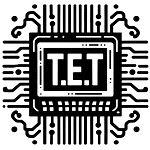TINA-TI video tutorials. 17 videos in this playlist.
PSpice Student video tutorial.
Sorry, at this time we don’t have a tutorial for OpenModelica
Comparing these different software and platform…
PSpice Student
PSpice Student, developed by Cadence Design Systems, is a widely used electronic circuit simulation software known for its robustness and versatility. It provides a comprehensive platform for simulating analog, digital, and mixed-signal circuits, making it suitable for both educational and professional purposes.
Benefits of PSpice Student:
- Wide Range of Component Models: PSpice Student offers an extensive library of component models, including passive components, active devices, and specialized components, enabling users to accurately simulate complex circuits.
- Mixed-Signal Simulation: It supports mixed-signal simulation, allowing users to seamlessly integrate analog and digital components within a single simulation environment.
- Parameter Sweeps and Monte Carlo Analysis: PSpice Student facilitates parameter sweeps and Monte Carlo analysis, enabling users to assess the impact of component variations and environmental factors on circuit performance.
- Interactive Simulation Environment: The software provides an intuitive and interactive simulation environment, allowing users to visualize waveforms, probe circuit nodes, and analyze simulation results in real-time.
- Integration with PCB Design Tools: PSpice Student seamlessly integrates with PCB design tools, enabling users to validate circuit designs and optimize layouts for fabrication.
Applications:
- Educational Purposes: PSpice Student is widely used in academic institutions for teaching circuit theory, electronics, and simulation techniques.
- Prototyping and Design Verification: Engineers utilize PSpice Student for prototyping and verifying circuit designs before moving to the fabrication stage.
- Analog and Mixed-Signal Circuit Design: It is particularly suited for simulating analog and mixed-signal circuits, including amplifiers, filters, oscillators, and power supplies.
TINA-TI
TINA-TI, developed by Texas Instruments, is a powerful circuit simulation software tailored specifically for TI analog products. It provides an intuitive and user-friendly interface, coupled with advanced simulation capabilities, making it a preferred choice for TI component users.
Benefits of TINA-TI:
- TI Component Library: TINA-TI offers an extensive library of TI analog components, including operational amplifiers, voltage regulators, and interface ICs, enabling users to simulate circuits using actual TI components.
- Behavioral Modeling: The software supports behavioral modeling, allowing users to create custom models for components and subsystems, facilitating accurate representation of real-world behavior.
- Transient and AC Analysis: TINA-TI enables transient analysis, AC analysis, and frequency-domain simulation, enabling users to characterize circuit behavior across different operating conditions and frequencies.
- Schematic Capture and SPICE Compatibility: It provides a schematic capture tool for designing circuits graphically, along with compatibility with SPICE models, ensuring interoperability with other simulation tools and platforms.
- Interactive Simulation and Optimization: TINA-TI offers interactive simulation capabilities, enabling users to modify circuit parameters in real-time and perform optimization to achieve desired performance metrics.
Applications:
- Design Validation with TI Components: Engineers and designers utilize TINA-TI to validate circuit designs using TI components, ensuring compatibility and optimal performance.
- Analog Signal Processing: TINA-TI is well-suited for simulating analog signal processing circuits, such as filters, amplifiers, and signal conditioning circuits.
- Educational Use: Similar to PSpice Student, TINA-TI finds applications in educational settings for teaching analog circuit design and simulation techniques.
Open Modelica
Open Modelica is an open-source modeling and simulation environment primarily focused on dynamic systems, including mechanical, electrical, and control systems. Unlike traditional circuit simulation tools, Open Modelica adopts a Modelica-based approach, allowing users to model and simulate complex physical systems using object-oriented modeling techniques.
Benefits of Open Modelica:
- Modelica Language Support: Open Modelica supports the Modelica language, a powerful modeling language for describing complex physical systems using modular components and equations.
- Multi-Domain Simulation: It facilitates multi-domain simulation, allowing users to model and simulate interactions between different physical domains, such as electrical, mechanical, thermal, and hydraulic systems.
- Custom Component Modeling: Open Modelica enables users to create custom component models using Modelica’s object-oriented approach, facilitating the modeling of specialized components and subsystems.
- Co-Simulation and FMI Support: The software supports co-simulation and Functional Mock-up Interface (FMI) standards, enabling interoperability with other simulation tools and platforms for integrated system-level simulation.
- Open-Source and Extensibility: Being open-source, Open Modelica encourages community collaboration and contributions, fostering the development of new libraries, models, and simulation techniques.
Applications:
- Dynamic System Simulation: Open Modelica is well-suited for simulating dynamic systems, including mechatronic systems, control systems, and renewable energy systems.
- Model-Based Design: Engineers and researchers utilize Open Modelica for model-based design, enabling them to simulate and optimize system-level performance before implementation.
- Research and Development: Open Modelica finds applications in research and development projects across various domains, including automotive, aerospace, and renewable energy, for simulating and analyzing complex system behaviors.
Conclusion
In conclusion, PSpice Student, TINA-TI, and Open Modelica represent three distinct yet powerful tools for circuit simulation and modeling, each offering unique features and capabilities. While PSpice Student and TINA-TI cater to traditional electronic circuit simulation with a focus on analog and mixed-signal circuits, Open Modelica provides a broader platform for modeling and simulating dynamic systems across multiple domains. The choice of tool depends on the specific requirements of the user, ranging from educational use to professional design and research applications. By understanding the strengths and applications of each tool, engineers and hobbyists can make informed decisions to select the most suitable platform for their needs.
